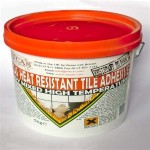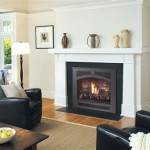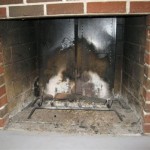Gas Fireplace Pilot Light Stays On: Understanding the Functionality and Troubleshooting Potential Issues
A gas fireplace offers a convenient and aesthetically pleasing alternative to traditional wood-burning fireplaces. One key component of a gas fireplace is the pilot light, a small, continuous flame that ignites the main burner when heat is desired. Under normal operation, the pilot light stays on at all times, ensuring immediate ignition when the fireplace is activated. However, understanding why the pilot light remains constantly lit, and the potential problems associated with this, is crucial for safe and efficient operation.
The pilot light serves as a reliable ignition source, eliminating the need for matches or lighters. A thermocouple or thermopile, a safety device, continuously monitors the pilot flame. If the pilot light extinguishes, the thermocouple/thermopile signals the gas valve to shut off the gas supply, preventing gas from leaking into the home. A continuously burning pilot light is therefore a designed safety feature, preventing the buildup of potentially explosive gas.
The primary concern with a perpetually lit pilot light is not its mere existence, but rather the associated gas consumption. While the amount of gas used by the pilot is small compared to the main burner, it accumulates over time. This constant gas usage translates to increased energy bills and a continuous source of heat within the room. Understanding the factors contributing to this consumption and potential troubleshooting steps can mitigate these concerns.
Understanding the Purpose of a Standing Pilot Light
The standing pilot light system is a foundational design element in many gas fireplaces. Its primary function is to provide an immediate ignition source for the main burner, which is activated when heat is demanded by the thermostat or manual switch. Without the standing pilot, the fireplace would require an electronic ignition system, which adds complexity and potential points of failure.
Furthermore, the standing pilot system incorporates a critical safety mechanism. The thermocouple or thermopile, positioned within the pilot flame, generates a small electrical current as long as the flame is present. This current keeps the main gas valve open. If the pilot light goes out, the current ceases, causing the gas valve to close, preventing the release of unburned gas into the environment. This safety feature is paramount in preventing potential hazards such as explosions or carbon monoxide poisoning.
Different fireplaces use either a thermocouple or a thermopile. A thermocouple generates a small millivolt current, enough to hold a small valve open. A thermopile, on the other hand, generates a higher voltage, sufficient to operate a more robust valve. The choice between the two depends on the design of the fireplace and its gas control system. Both devices perform the same essential safety function of ensuring the gas supply is cut off if the pilot light is extinguished.
The standing pilot system, while relatively simple, is a reliable and effective method for ensuring safe and convenient operation of a gas fireplace. Its continuous operation, while consuming a small amount of gas, is a trade-off for the immediate ignition and crucial safety features it provides.
Potential Problems Associated with a Constantly Burning Pilot Light
While a continuously burning pilot light is normal, several issues can arise that warrant attention. These issues can range from minor inefficiencies to potentially hazardous situations.
Increased Energy Costs: As previously mentioned, the constant gas consumption of the pilot light contributes to increased energy bills. While the individual cost may seem insignificant, it accumulates over time, especially during warmer months when the fireplace is not in regular use. Depending on the gas rate and the pilot light's consumption rate, the cost can be noticeable.
Excess Heat: A continuously burning pilot light generates heat, which can be undesirable, particularly during warmer months. This excess heat can contribute to higher cooling costs and may make the room uncomfortable. The amount of heat generated is typically small, but in smaller rooms or poorly ventilated spaces, it can be a noticeable nuisance.
Carbon Buildup: An improperly adjusted or malfunctioning pilot light can produce excessive carbon buildup on the surrounding components, including the thermocouple/thermopile and the burner assembly. This carbon buildup can interfere with the proper function of these components, leading to ignition problems or even complete failure. Soot production is a visual indicator of incomplete combustion and requires investigation.
Drafts: If the pilot light is frequently extinguished by drafts, despite staying lit under normal conditions, it indicates a potential problem with the fireplace's ventilation system or the surrounding environment. Strong drafts can disrupt the pilot flame, causing it to go out and potentially triggering the safety shut-off mechanism. This is a sign the flame isn't stable and the area around the fireplace may need better sealing from outside winds.
Malfunctioning Thermocouple/Thermopile: Although designed for safety, the thermocouple or thermopile itself can fail. A failing thermocouple/thermopile might not generate sufficient current to keep the main gas valve open, leading to the pilot light extinguishing intermittently. Conversely, a shorted or damaged thermocouple/thermopile can cause the gas valve to remain open even when the pilot light is extinguished, creating a dangerous situation. Testing with a multimeter is generally required to diagnose the thermocouple/thermopile issue.
Addressing these potential problems promptly is crucial for ensuring the efficient, safe, and reliable operation of the gas fireplace.
Troubleshooting Steps for a Gas Fireplace Pilot Light
When encountering issues with a gas fireplace pilot light, a systematic approach to troubleshooting can often identify and resolve the problem. Before attempting any troubleshooting steps, ensuring the gas supply is turned off is paramount for safety. If unsure, consult a qualified technician.
Check the Pilot Light Flame: Visually inspect the pilot light flame. A healthy flame should be blue with a slight yellow tip. A yellow or orange flame indicates incomplete combustion, potentially due to a dirty burner or insufficient airflow. Cleaning the pilot light orifice with a small wire brush or compressed air can often resolve this issue. However, ensuring the gas supply is completely shut off before disassembling any gas components is essential.
Inspect the Thermocouple/Thermopile: Examine the thermocouple/thermopile for signs of damage or corrosion. Clean the thermocouple/thermopile with fine steel wool to remove any carbon buildup or oxidation. Ensure the thermocouple/thermopile is properly positioned within the pilot flame, as its effectiveness depends on direct exposure to the heat. Verify the wire connections are secure and free from corrosion. Using a multimeter, test the thermocouple/thermopile output voltage to confirm it is within the manufacturer's specifications. A reading outside the acceptable range indicates a faulty thermocouple/thermopile that needs replacement.
Check the Gas Valve: The gas valve controls the flow of gas to both the pilot light and the main burner. Ensure the gas valve is properly set to the "pilot" position. If the pilot light fails to stay lit even after holding the pilot button down for the recommended time (usually 20-30 seconds), the gas valve may be malfunctioning. A malfunctioning gas valve may require professional repair or replacement. Do not attempt to repair the gas valve yourself, as it involves specialized knowledge and tools.
Check for Gas Leaks: Before relighting the pilot light, inspect the gas lines and connections for any signs of gas leaks. Apply a soap and water solution to the connections. If bubbles form, a gas leak is present. Immediately shut off the gas supply and contact a qualified technician to repair the leak. Never use a flame to check for gas leaks, as this can result in a fire or explosion.
Address Drafts: Identify and eliminate any sources of drafts that may be extinguishing the pilot light. Seal any gaps or cracks around windows and doors. Check the fireplace's ventilation system to ensure it is functioning properly. If the fireplace is located in a room with excessive drafts, consider relocating it or installing a draft shield.
Clean the Burner Assembly: Over time, dust and debris can accumulate on the burner assembly, interfering with the proper flow of gas and air. Clean the burner assembly with a vacuum cleaner and a soft brush to remove any debris. Ensure the burner ports are clear and unobstructed. Consult the fireplace's owner's manual for specific cleaning instructions.
Professional Inspection: If the troubleshooting steps do not resolve the issue, seeking professional assistance is recommended. A qualified technician can diagnose and repair more complex problems, such as a faulty gas valve, a malfunctioning control board, or a damaged gas line. Regular maintenance and inspections by a qualified technician can prevent potential problems and ensure the safe and efficient operation of the gas fireplace.
By following these troubleshooting steps, many common pilot light issues can be resolved. However, safety should always be the top priority. When in doubt, consult a qualified technician for assistance.

Should I Turn Off The Pilot Light In Spring B C Comfort Fireplace Hvac Repair Installation

Gas Fireplace Won T Stay Lit Magic Touch Mechanical

Best And No 1 Pilot Light Elegant Fireside Patio
Is It Okay If My Pilot Light Therma Coupler Red Hot When Having The On A Gas Fireplace Quora

Fireplace Won T Stay Lit This Is How You Fix It

Gas Fireplace Won T Stay Lit Magic Touch Mechanical

Gas Fireplace Pilot Light Won T Stay Lit Easy Fix

Is It Okay To Leave A Pilot Light On For Gas Fireplace

How A Pilot Light Works Www Mygasfireplacerepair Com

Does My Pilot Light Need To Stay On All Year Round We Love Fire
Related Posts








